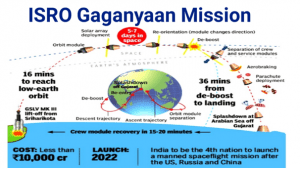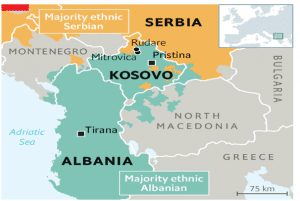1. VIENNA CONVENTION
TAG: GS 2: INTERNATIONAL RELATIONS
THE CONTEXT: Canada asked India to uphold its obligations under the 1961 Vienna Convention on Diplomatic Relations.
EXPLANATION:
- The Canadian government recalled 41 diplomats posted in India.
- As the tension between the two countries began with Canada accusing India of having a role in murder of the Khalistan leader Hardeep Singh Nijjar in Canada.
What is the Vienna Convention?
- The Vienna Convention on Diplomatic Relations is an international treaty signed by 61 countries in 1961. At present 193 countries are party to the document.
- It puts forth a framework for diplomatic interactions between independent nations and aims to ensure the development of friendly relations among nations.
- The Vienna Convention provides special rules (privileges and immunities) for diplomats, which allows them to act without fear or harassment through enforcement of local laws and to communicate securely with their sending Governments.
- The Vienna Convention also has rules laid out for a withdrawal of a mission. It could take place on grounds of economic or physical security and breach of diplomatic relations.
- Diplomats are granted exemption from certain laws and taxes in the country they are posted.
- The agents enjoy immunity from the criminal jurisdiction of the receiving State.
- They are also provided with immunity from its civil and administrative jurisdiction.
Article 29 of the Vienna Convention:
- According to article 29 of the Convention, the person of a diplomatic agent shall be inviolable.
- The person shall not be liable to any form of arrest or detention.
- The receiving State shall treat him with due respect and shall take all appropriate steps to prevent any attack on his person, freedom, or dignity.
What is Article 11.1 of the Vienna Convention?
- Article 11.1 of the Vienna Convention is related to the size of international missions within other countries.
- According to the Article 11.1, In the absence of specific agreement as to the size of the mission, the receiving State may require that the size of a mission be kept within limits considered by it to be reasonable and normal.
Challenges related to Vienna Convention on Diplomatic Relations:
- Misuse of diplomatic immunity: Diplomats have been known to take advantage of “diplomatic immunity” to cover up crimes like molestation, sexual assault, and human trafficking. Ex-Bahrainian Consul General used “diplomatic immunity” in 2013 to evade being arrested in connection with a Mumbai molestation case.
- Use of the Convention’s privileges for espionage: The Convention offers undercover intelligence operatives stationed in embassies, who are primarily engaged in espionage within the borders of their host countries, a safety net.
- The convention contains no definition for household or family: Each country has its own official definition of what constitutes a family. When Western nations use their official definition of a family, many ambassadors from developing nations who have dependent college-bound children or elderly single parents encounter difficulties.
2. GAGANYAAN MISSION
TAG: GS 3: SCIENCE AND TECHNOLOGY
THE CONTEXT: Gaganyaan’s first Flight Test Vehicle Abort Mission-1 (TV-D1) is successfully accomplished.
EXPLANATION:
- ISRO announced that the TV-D1 Mission is fully achieved, and the Crew Escape System performed as intended.
- The mission, launched using a special test vehicle (TV), saw the vehicle and Crew Escape System (CES), which enabled the CM to get to a safe distance before it began its drop to splashdown before recovery, sinking in the sea.
- TV-D1 Vehicle: The Liquid propelled single stage Test Vehicle uses a modified VIKAS engine with Crew Module (CM) and Crew Escape System (CES) mounted at its fore end.
Gaganyaan Mission:
- Under the Gaganyaan Mission, ISRO will be sending three humans to an orbit of 400 km for a 3-day mission and bring them back safely to Earth.
- It is named after the Sanskrit word for craft or vehicle to the sky.
- If it succeeds, India will become only the fourth country to send a human into space after the Soviet Union, the US, and China.
- The Indian Space Research Organization (ISRO) is developing a spacecraft called the Orbital Module, which is made up of a crew module and a service module.
- Orbital Module (OM): OM that will be Orbiting Earth. OM is equipped with state-of-the-art avionics systems with adequate redundancy considering human safety.
- Crew module (CM): It is a habitable space with Earth like environment in space for the crew. It is of double walled construction consisting of pressurized metallic Inner Structure and unpressurised External Structure with Thermal Protection System (TPS). It houses the crew interfaces, human centric products, life support system, avionics and deceleration systems. It is also designed for re-entry to ensure safety of the crew during descent till touchdown.
- Service module (SM): It will be used for providing necessary support to CM while in orbit. It is an unpressurized structure containing thermal system, propulsion system, power systems, avionics systems and deployment mechanisms.

Launch vehicle M3(LVM3) rocket: The well proven and reliable heavy lift launcher of ISRO, is identified as the launch vehicle for Gaganyaan mission. It consists of solid stage, liquid stage and cryogenic stage. All systems in the LVM3 launch vehicle are re-configured to meet human rating requirements and christened Human Rated LVM3.
Significance of Gaganyaan mission:
- The initiative would promote national research and development in specialized fields of science and technology.
- Certain vital technologies, such as the capacity to conduct re-entry missions, the crew escape system, the configuration of the crew module, the thermal protection system, the deceleration and flotation system, and the subsystems of the life support system needed for Mission Gaganyaan, have been created by ISRO.
- A unique microgravity platform in space for conducting research and serving as a test bed for upcoming innovations will be made available by the human spaceflight program.
- There is potential for technological spin offs in a number of fields, including waste management, water and food resource management, pollution, industrial safety, medicine, and agriculture.
3. TENSIONS BETWEEN SERBIA AND KOSOVO.
TAG: GS 2: INTERNATIONAL RELATIONS
THE CONTEXT: EU and U.S. envoys urge Kosovo and Serbia to resume dialogue to ease soaring tension.
EXPLANATION:
- The envoys of the United States and the European Union have urged Serbia and Kosovo to start talking in order to reduce the escalating hostilities between the two countries.
- This visit follows a violent event that occurred recently in which approximately thirty Serb militants entered northern Kosovo, killing a police officer and causing a conflict with Kosovo police.
- The envoys stressed the need for de-escalation and normalization in order to settle their disputes and pave the way for both nations’ eventual EU membership.
Background of the tension:
- After the break-up of Yugoslavia in the 1990s, Kosovo sought independence.
- Kosovo is a mainly ethnic Albanian populated territory that was formerly a province of Serbia. It declared independence in 2008.
- Kosovo’s majority ethnic Albanians view Kosovo as their own country and accuse Serbia of occupation and repression.
- Serbia has refused to recognize Kosovo’s statehood and still considers it part of Serbia, even though it has no formal control there.
- Kosovo’s independence has been recognized by about 100 countries, including the United States.
- Russia, China and five EU countries, most of them with separatist regions of their own, have sided with Serbia.
- The deadlock has kept tensions simmering and prevented full stabilization of the Balkan region after the bloody wars in the 1990s.

4. PAINTBRUSH SWIFT BUTTERFLY
TAG: GS 3: ENVIRONMENT AND ECOLOGY
THE CONTEXT: Paintbrush swift butterfly is seen for the first time in Himachal Pradesh.
EXPLANATION:
- Paintbrush swift butterfly that is rare in the western Himalayas, has been seen for the first time in Himachal Pradesh’s Chamba district.
- The State is home to around 430 butterfly species or about 25% of the total number of butterfly species found in India.
- The butterfly species was seen during a field study carried out as part of the Wild Bhattiyat Project, which was started by the Himachal Pradesh Forest Department’s Bhattiyat Forest Range.
About Paintbrush swift butterfly:
- The scientific name of the Paintbrush swift butterfly is Baoris farri. It belongs to the species of the Hesperiidae family.
- The species has never been seen in Himachal Pradesh since its discovery in 1878.
- It is seen for the first time in the lower hills of the Dhauladhar mountain range.
- The paintbrush swift is identified based on two separated spots in the upper forewing cell. Other closely related species like the blank swift have no cell spot while the figure-of-eight swift has two conjoined cell spots.
- The species’ larvae feed on bamboo and some other grass species.

Habitat: Habitat distribution is common in northeast, central and south India, and rare in Uttarakhand.
Threats:
- Butterflies depend on wild host and nectar plants which makes them particularly vulnerable to changes in their environment.
- Habitat loss and scarcity of larval host plants are major causes of the decline in the butterfly population.
- An increase in pesticide use, deforestation, and climate change are some of the other causes of habitat loss of butterflies.
5. DAM SAFETY ACT (DSA)
TAG: GS 3: DISASTER MANAGEMENT
THE CONTEXT: A glacial lake outburst flood (GLOF) in North Sikkim’s South Lhonak Lake washed away one of the biggest hydropower projects in India.
EXPLANATION:
About Dam Safety Act (DSA):
- India has almost 6,000 large dams and almost 80% of them are more than 25 years old and carry safety risks.
- A new Dam Safety Act (DSA) was passed in late 2021 for proper surveillance, inspection, operation and maintenance of the specified dams.
- The Act aims for preventing dam failure related disasters and provides for institutional mechanisms to ensure their safe functioning.
- The Act has provision for setting up an empowered institutional framework for dam safety both at the Central and State level.
- At national level, the Central Government has constituted the National Committee on Dam Safety which discharges functions to prevent dam failure related disasters and maintain standards of dam safety and evolve dam safety policies and recommend necessary regulations.
- The Central Government has also established the National Dam Safety Authority as a regulatory body for ensuring the nationwide implementation of dam safety policies and standards.
- At the State level, the Act provides for the constitution of the State Committee on Dam Safety (SCDS) and the establishment of the State Dam Safety Organization (SDSO) to ensure proper surveillance, inspection, operation and maintenance of all specified dams in that State and also to ensure their safe functioning.
What do the States need to do?
States are required to:
- classify dams based on hazard risk.
- conduct regular inspections.
- create emergency action plans.
- institute emergency flood warning systems.
- undertake safety reviews and period risk assessment studies.
- report and record incidents of dam failures.
Punitive provisions:
- Failure to comply with any provision of the Act is punishable with imprisonment and/or fines.
- If such obstruction or refusal to comply with directions results in loss of lives or imminent danger, then the entity shall be punishable with imprisonment for a term which may extend to two years.
- For example, in February 2023, the Sikkim High Court ordered the Gati Hydropower Project company to pay ₹70 lakh to two widowed mothers, for non-compliance with the Dam Safety Act.
Challenges:
- The DSA does not promote risk-based decision-making and fails to incentivise transparency.
- Periodic reviews are either not carried out very regularly or, when they are, the results are not readily accessible to the general public.
- There is no standardization in the analysis and reporting of failures, despite the Act requiring dam builders to do thorough dam safety evaluations.
- There is no single agency that was tasked with tracking the data of Dam failure.
- A robust DSA should allow different stakeholders to access information easily, but India’s framework falls short in this field.

